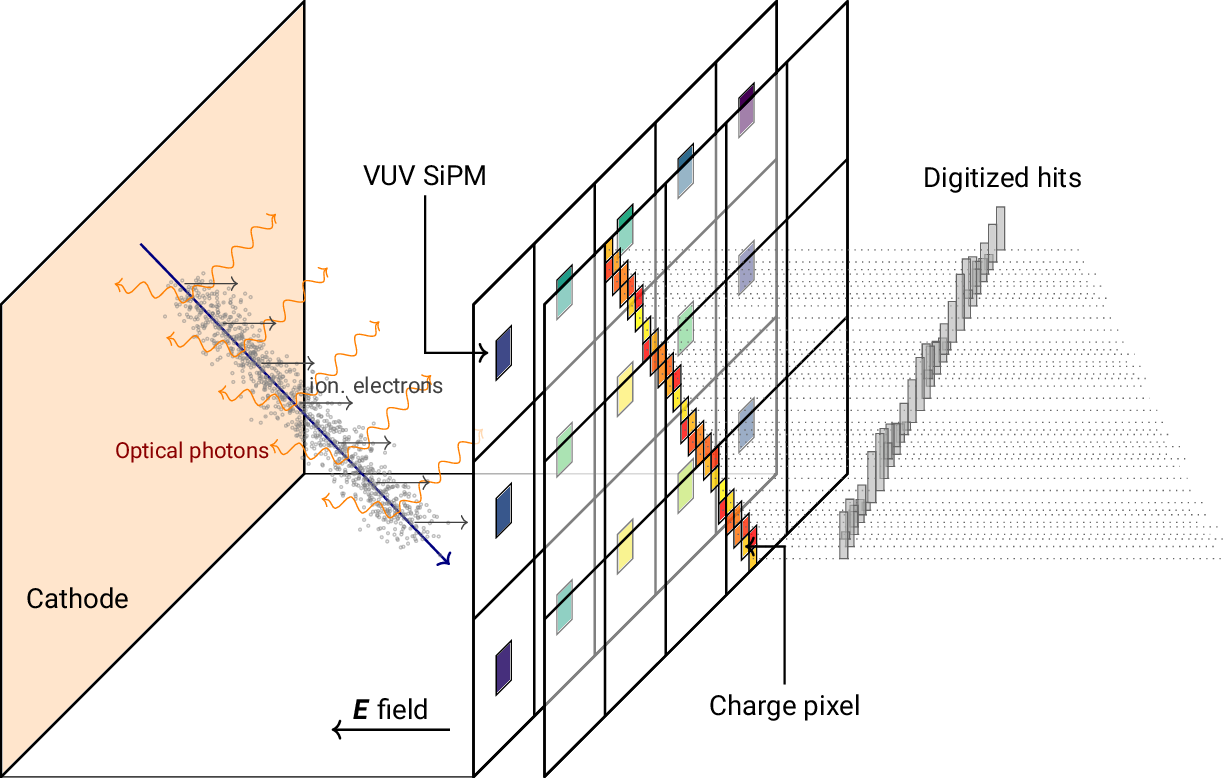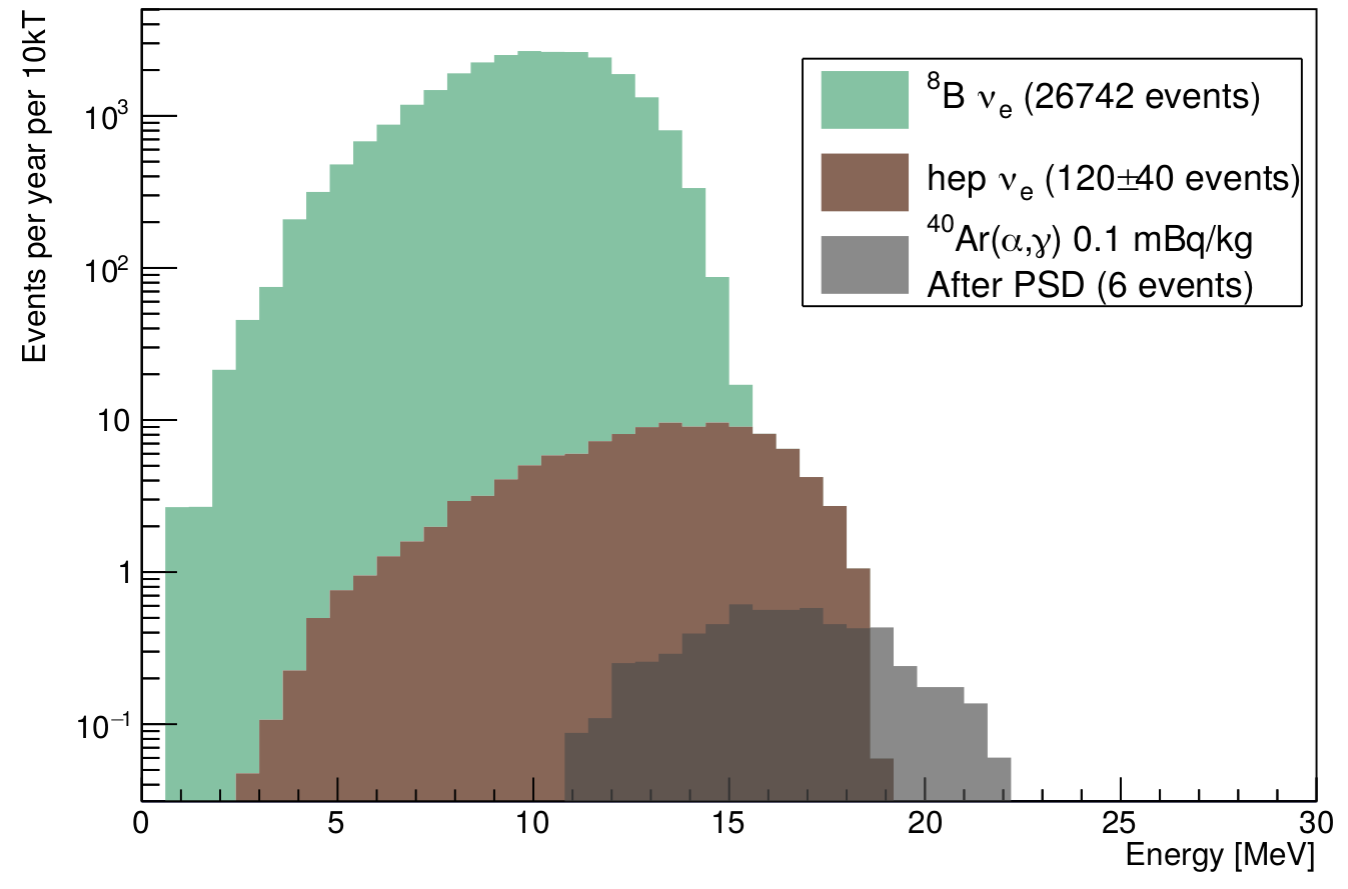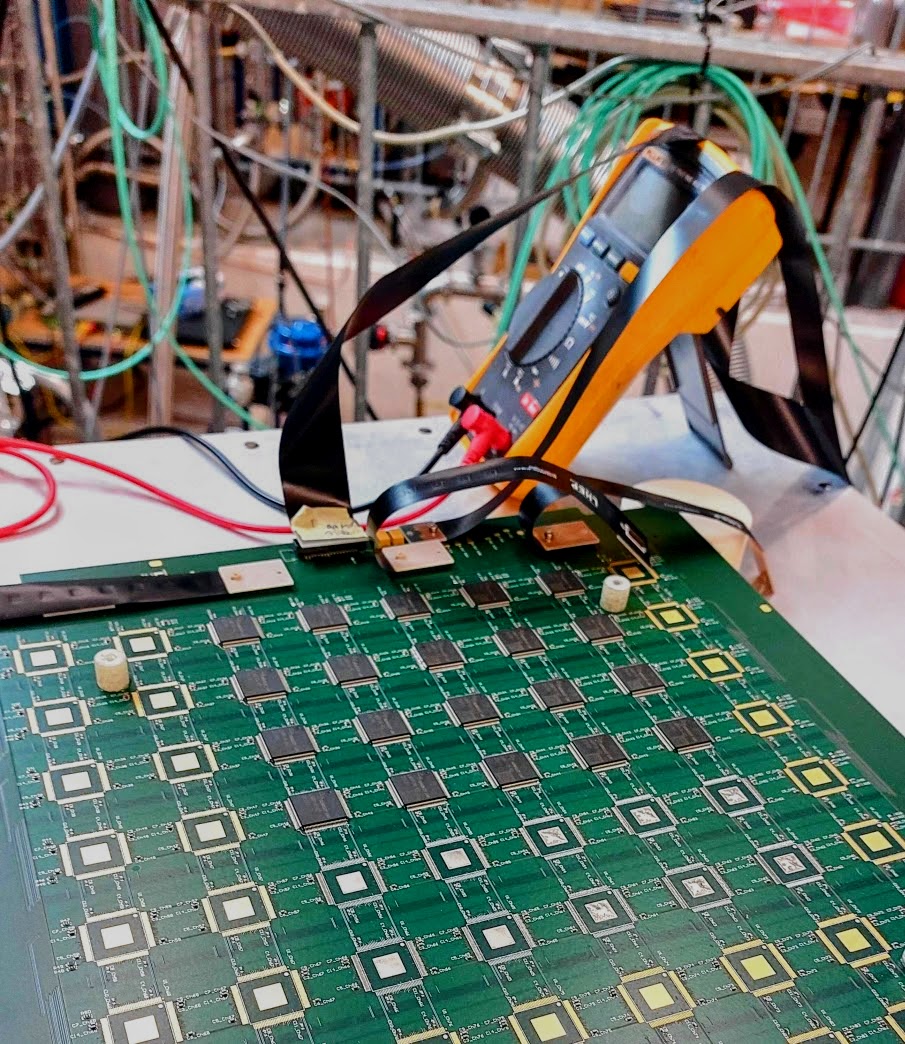A new concept of LArTPC
With SoLAr we aim to introduce a new concept of LArTPC that will truly make the best out of this detector technology. A pixelated, photo-sensitive anode will improve the track reconstruction with native 3D information and will boost the overall light collection performance of the detector. The improved photon-detection system will be a game-changer for LArTPCs and promises to achieve unprecedented energy resolution thanks to a combined analysis of the enhanced light signal and the ionization charge collected by the anode’s pixels.
Physics opportunities at low-energy
The SoLAr LArTPC is designed to be a multi-purpose detector for neutrino physics and rare-events searches, covering three orders of magnitude in energy from the MeV to the GeV scale. With respect to the DUNE Far Detector modules, we aim to improve the physics performance of the detector at the MeV scale. The superior energy resolution combined with an accurate strategy of background mitigation will expand the potential of LArTPCs to low-energy astrophysical neutrinos. In particular we are focusing on the potential of this technology for solar neutrinos, exploring the prospects for a precise determination of oscillation parameters and for the discovery of neutrinos produced by the ³He-p fusion in the Sun, the only branch of the proton-proton fusion chain that has eluded detection so far.
The SoLAr technology
The SoLAr TPC design is made possible by two recent breakthroughs in LAr technology. Firstly, the development and commercialization of Silicon PhotoMultipliers (SiPMs) sensitive to the characteristic VUV wavelength of LAr scintillation light with a photo-detection efficiency as high as 15%. Secondly, the introduction of pixelated readout of LArTPCs enabled by dedicated, cryogenic compatible ASICs. One of the goals of SoLAr is the integration of these two technologies into a single device capable of collecting the ionization signal as well as the LAr scintillation light.


